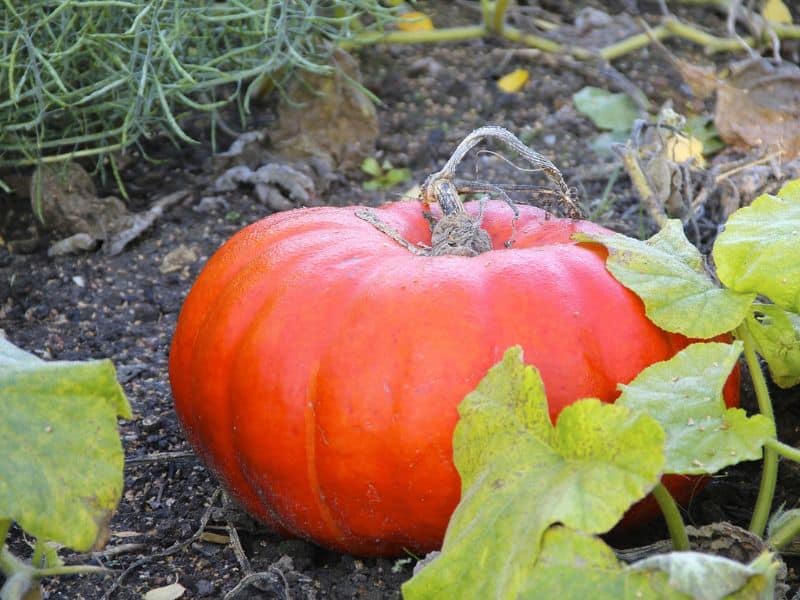You’ve been nurturing your pumpkin plant, watering it diligently, only to discover that it’s looking less than perky. Could it be that you’re overwatering? Overwatering is a common mistake made by both novice and seasoned gardeners. It’s a silent killer, often mistaken for under-watering or disease.
In this article, we’ll delve into the signs of an overwatered pumpkin plant, the damage it can cause, and most importantly, how to save your plant from this watery doom. As you read on, you’ll gain insights into proper watering techniques and preventive measures to ensure your pumpkin plant thrives.
So, let’s rescue your wilting plant and turn your green thumb a shade greener.
Identifying Symptoms of Overwatered Pumpkin Plants
Understanding the signs of overwatering can help you rectify the issue before your pumpkin plants suffer irreversible damage. Let’s dive into the specifics.
Yellowing Leaves
When you’re overdoing it with the water, your pumpkin plant’s leaves start to turn yellow. It’s simple enough to mistake it as a sign of aging or nutrient deficiency, but it’s often due to water-logged roots that can’t properly take up nutrients. Pay attention to this subtle hint and adjust your watering patterns to avoid any harm.
Wilting and Limpness
Contrary to what one may well think, wilting isn’t just a sign of too little water. If your pumpkin plant exhibits wilting, saggy leaves despite regular watering, it’s likely the plant is getting too much.
When roots are drowned in water, they find it hard to carry oxygen to the rest of the plant, leading to the wilting appearance. Remember, overwatering can be just as harmful as drought.
Mold and Fungus Growth
An unwelcome visitor that’s often a sign of overwatering is fungi. Damp, stagnant conditions are a breeding ground for mold, and your overwatered pumpkin plant may well start developing fuzzy or slimy growths.
If you spot any mold or darker patches on the plant or soil, it’s time to re-analyze your watering schedule and aim for balance.
Common Causes of Overwatering Pumpkin Plants

Sometimes, you may well find your pumpkin plants showing signs of distress, even if you think you’ve been taking good care of them. Overwatering could be a surprising culprit. Let’s delve into some common causes of overwatering.
Incorrect Watering Schedule
Adhering to a precise watering schedule is crucial for ensuring the health of your pumpkin plants. One common cause of overwatering is a lack of understanding the plant’s unique water needs.
Pumpkin plants typically require deep, infrequent watering instead of regular, shallow watering. If you’re watering your pumpkins daily, you may well actually be doing more harm than good. For example, instead of watering daily, it may well be beneficial to deeply water your plants once or twice a week.
Poor Soil Drainage
Having soil that doesn’t drain properly is another major culprit behind overwatering pumpkin plants. If your pumpkin plant is sited in a spot where water tends to pool or if the soil retains too much water, this can lead to overwatering issues.
So, always make sure you plant in well-draining soil, such as loamy soil mixed with a little coarse sand.
Environmental Factors
Environmental elements can also contribute to overwatering. For example, a rainstorm can unexpectedly drown your plants, or a period of cool, cloudy weather can slow down the rate of water absorption of the plants.
Monitoring the weather and adjusting your watering schedule accordingly, combined with choosing a planting site that offers some protection from heavy rain, can help you avoid accidental overwatering.
Step-by-Step Guide to Rescue Overwatered Pumpkin Plants
Salvaging your waterlogged pumpkin plants needn’t be a herculean task. Let’s delve into the step-by-step process to get things moving in the right direction.
Adjusting Watering Techniques
First things first, change your watering habits. Infrequent, deep watering is ideal. Rather than watering daily, soak the root zone thoroughly once or twice a week. This fosters deep root growth, making your pumpkin plants hardier and less susceptible to rot.
Improving Soil and Drainage
Next, focus on enhancing soil properties and drainage. Adding organic compost or well-rotted manure can improve soil structure, promoting better water retention and drainage. Furthermore, consider planting on raised beds or mounds, enhancing natural runoff and minimizing waterlogged soil.
Monitoring Plant Recovery
Last but not least, keep an eagle eye on the recovery process. After adjusting watering techniques and improving soil drainage, observe the changes. Look out for crisp looking leaves and stronger stems as signs of recovery.
Any further wilting or yellowing, however, may indicate ongoing issues that need your prompt attention. In this case, you may well need to consult with a gardening expert or consider transplanting to a drier location.
Preventative Measures for Healthy Pumpkin Plants
Now that we’ve identified potential concerns and solutions for overwatered pumpkin plants, let’s move on to some preventive measures you can take right from the beginning.
Choosing the Right Planting Location
Selecting an ideal spot for your pumpkins to grow is essential. Firstly, they love the sun, so aim for a location with 6-8 hours of full sunlight per day. Secondly, pumpkins need space.
Each plant can sprawl out over 15 to 20 feet, so ensure your chosen spot affords this luxury. Lastly, consider an area with good air circulation. This helps in preventing the onset of fungal diseases, common in pumpkin plants.
Using the Right Soil Mix
An excellent soil mix can significantly impact your pumpkin plant’s health. Ideally, the soil should be loamy and well-draining. It should be rich in organic matter, preferably humus.
If your garden soil is clay or sandy, improve it by adding well-rotted compost or well-rotted manure. Remember, a well-aerated and well-drained soil mix will allow the roots to breathe and absorb nutrients more effectively, reducing the chances of overwatering.
Establishing a Watering Schedule
Next, set up a watering regime. Pumpkin plants enjoy a good drink, but they don’t like to sit in water. Aim to water your plants deeply and less frequently instead of shallow and often.
Infrequent deep watering encourages the roots to grow deep, improving the plant’s drought tolerance. Try watering your pumpkins once a week if there isn’t sufficient rainfall.
Adjust your watering schedule according to the season, soil type, and the plant’s growth stage. Sticking to a consistent watering schedule will ensure your plants stay hydrated without falling victim to overwatering.







